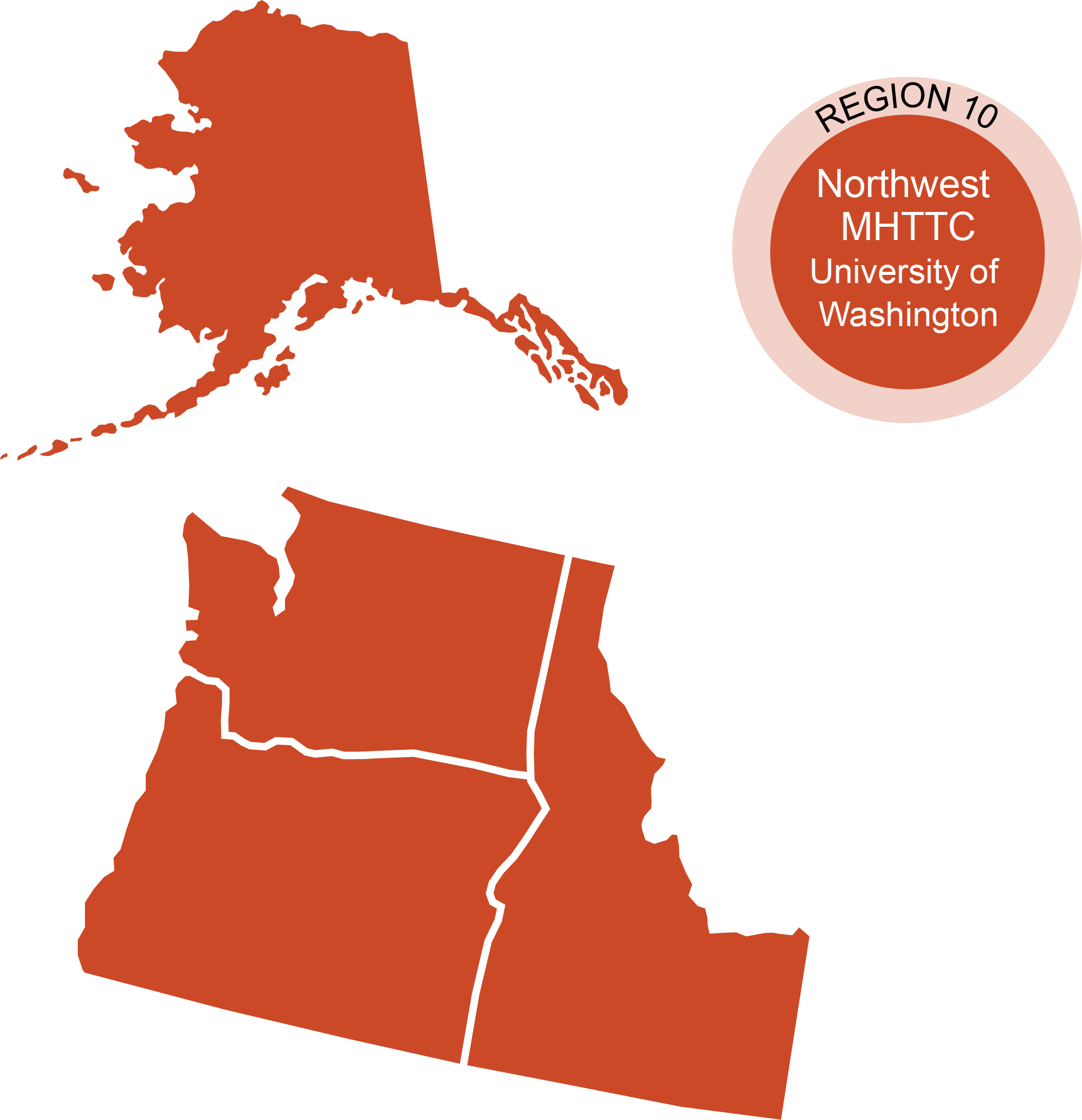Home > MIC Stories: Implementation of Evidence-based Lifestyle Program in a Certified Community Behavioral Health Center (CCBHC)

MIC Stories (MHTTCs Implementing Change) feature technical assistance projects that had a significant impact on practice.
People with serious mental illness have a life expectancy that is on average 10-15 years shorter than that of the general population. Cardiovascular disease (CVD) is the leading cause of this premature mortality;1 obesity and diabetes are major risk factors for CVD, and all antipsychotic medications are associated with increased risks of both obesity and diabetes.2
STRIDE is an evidence-based lifestyle program that aims to promote a healthy weight among adults who are prescribed antipsychotic medications and who are overweight or obese.3 The intervention emphasizes moderate caloric reduction, the DASH (Dietary Approaches to Stop Hypertension) diet, and physical activity. In a large multisite clinical trial, this 24-session group-based program was associated with clinically significant weight loss.4
Despite effectiveness in reducing CVD risk factors, STRIDE and other similar evidence-based lifestyle programs have not been widely implemented in routine community mental health settings. Several barriers have been identified, including limited awareness of specific effective interventions, the misperception that programs require special expertise, and limited access to training and program materials.5
Integrated care—and specifically for people with serious mental illnesses-- was a priority topic identified in the regional needs assessment conducted by the Northwest MHTTC in 2021. In response to this need, a pilot implementation of STRIDE in a community mental health center was proposed to inform larger efforts to disseminate the program, and specifically to develop scalable training materials, and identify barriers and facilitators to implementation to refine implementation support strategies and materials.
The 18-month project (January 2021-June 2022) involved intensive TA to a single large Behavioral Health Organization in Tacoma WA to implement STRIDE groups to improve health outcomes among their adult clients with psychosis. Northwest MHTTC partnered with the developers of the STRIDE intervention, researchers and trainers from the Kaiser Permanente Center for Health Research in Portland OR. Together, we supported Comprehensive Life Resources to launch STRIDE lifestyle groups and develop a plan for sustaining and scaling this program throughout the adult outpatient care programs at their organization.
The goals for the pilot were to 1) develop scalable training materials; 2) tailor implementation strategies to target implementation barriers that were identified during the early implementation period (6 months after program launch); and 3) explore the feasibility of launching the 6-month program, acceptability of the program to clients and staff and reach of the program in the early implementation period.
This project took place in Tacoma, WA with one large behavioral health organization, at Comprehensive Life Resources (CLR), that became a Certified Community Behavioral Health Clinic (CCBHC) in 2022.
Throughout 2020, we had discussions with several potential partners in Region 10 for a pilot implementation project, mainly multi-disciplinary teams that serve people with serious mental illnesses (such as Assertive Community Treatment or Coordinated Specialty Care for early psychosis). CCBHCs have infrastructure to support integrated care services and data tracking and reporting, and we proposed the project to several CCBHCs (and applicants) in Region 10. CLR had included a lifestyle program as one of the evidence-based practices in their CCBHC application and volunteered to be the pilot site.
In the research trial, STRIDE groups had two co-facilitators, a community mental health clinician and a nutritionist, but no specific expertise was required for the role. We allowed CLR to assess their staffing and identify staff to be trained in the role. Nine CLR clinical staff attended the two-day training to be STRIDE group facilitators. Staff members included a nurse (n=1), social workers (n=2), peer specialists (n=2), and other (n=4) - recreation therapist/OT, case manager, CDP). Educational level: BA or less (n=7); Master’s level (n=1); and PhD (n=1).

We utilized multiple implementation strategies:6
Contextual/determinant considerations
Facilitators and barriers to implementation of STRIDE groups in this pilot were identified through 1) semi-structured interviews with the first three facilitators to launch a STRIDE group, conducted two months after launching the program; 2) STRIDE group facilitators feedback and reporting at monthly coaching calls; 3) CLR implementation team reporting at practice facilitation meetings.
Facilitators that aided implementation
a) Outer setting (system factors, or those external to the organization or related to participant resources):
b) Inner setting (i.e., organizational factors):
c) Individual staff factors:
d) Intervention characteristics
Barriers:
a) Outer setting:
In response to the above barrier to in-person attendance at groups, STRIDE facilitators at CLR adapted the curriculum to be conducted either virtually or through a “hybrid” approach (some attendees in person, others joining virtually). Online options for program delivery, though, were limited due to lack of internet access among many participants.
b) Inner setting:
c) Individual staff factors:
d) Intervention Characteristics
Goal 1. involved the translation of a 200-page facilitator guide and a 2-day in-person skills training (materials from a clinical trial) into 1) a 30-minute self-paced online module introducing the topic and the intervention; and 2) two 4-hour virtual sessions for skills coaching. The quality of these training materials was assessed through post-training surveys.
Goal 2. As described above, facilitators and barriers to implementation of STRIDE groups were identified through 1) semi-structured interviews with the first three facilitators to launch a STRIDE group, conducted two months after launching the program; 2) STRIDE group facilitators feedback at coaching calls; 3) CLR implementation team reporting at practice facilitation meetings.
Goal 3. Reach of the program was defined as the number of individuals who received the intervention. Because the organization launched the STRIDE program as open groups, we defined reach as the number of clients who attended one or more STRIDE sessions.
Goal 1: Quality of training and satisfaction with training.
Goal 2: Facilitators and Barriers are detailed in the above section
Goal 3: The first STRIDE group launched in January 2022, and between March-June 2022, three subsequent groups launched. Attendance has been lower than anticipated, with on average, 4 attendees per group (goal was 8-10).
This intensive TA project addressed a priority topic in R10 (integrated care) and a gap in the literature about implementation support required by community mental health organizations to implement evidence-based lifestyle programs. Based on the literature and our experience prior to the project, major barriers to implementation were awareness of specific evidence-based interventions and access to training materials. The primary goal of this project (and the first step to implementing an intervention at scale), was to partner with the developers of the effective STRIDE intervention to develop scalable training materials. These materials (including translation of in-person skills training into virtual training with “hands on” activities) were highly rated and the brief online introduction has been among the most popular MHTTC online courses in HealtheKnowledge.
A wide range of providers (recreation therapist, case manager, peer specialist) successfully facilitated STRIDE groups. Adaptations to the STRIDE intervention itself were required for implementation in clinical setting, including 1) offering open groups rather than aiming to recruit a cohort to complete the 30 sessions; and 2) offering virtual or hybrid groups because of the COVID pandemic. The clinical team in supported housing services also launched a group and are working to adapt the curriculum to best serve their clients.
The program launched on time, completed the 24-session curriculum with a first group, and launched two other groups during the first 6 months of implementation. The number of participants was much smaller than planned. While COVID was the major barrier to engagement in groups, participants also reported several other challenges common to engaging in clinical services (e.g., transportation, childcare). Staff turnover was substantial, as two of the initial 3 STRIDE group facilitators left the organization during the first 6 months of the program.
There were also, though, implementation barriers that could be addressed by practice facilitation. In many clinical settings, lifestyle groups are not sustained because there is no systematic process to identify clients who might benefit. The pilot organization did have these data available, but there was no protocol to incorporate the data into a referral workflow—and no individual staff was accountable for monitoring whether referral numbers met pre-specified targets. The organization had received CCBHC funding during the pilot period, and the CCBHC infrastructure and resources initially seemed to be significant facilitators to STRIDE implementation. In reality, though, the leadership team was unable to sustain attention on STRIDE given competing demands from launching other CCBHC requirements. The clinical champion for the program was a new position that was created with CCBHC funding. This person was hired after the initial implementation plan was developed and after training and became the sole representative of the implementation team on facilitation and improvement activities. There seemed to be a dilution of the initial vision for the program and STRIDE group facilitators felt increasingly disconnected from leadership over time. Several attempts to monitor fidelity were found to be infeasible and there was limited engagement in activities to use data to improve program performance. Specific attention to these key determinants of program sustainment (clinical champion, multi-disciplinary implementation team, accountability for key implementation tasks and capacity to use data to improve care) should be emphasized in practice facilitation activities to support implementation.
The organization plans to continue to provide STRIDE groups but has slowed the pace of rolling out new groups. The group at the supported housing site continues and there is a plan to launch a group on the Coordinated Specialty Care team for youth and young adults with a first episode psychosis, utilizing the tools developed in this pilot.
The lessons learned from this intensive TA project were very valuable to the MHTTC. First, we developed processes and protocols to translate in-person trainings and dense manuals from clinical trials into user-friendly and accessible tools that are more disseminable. The curriculum package for the STRIDE implementation is available on the Northwest MHTTC website. The identified barriers and facilitators to implementation of lifestyle programs will inform specific implementation strategies for larger efforts to scale STRIDE and are generalizable to other intensive TA activities within community mental health and CCBHC settings.

The Northwest MHTTC, funded by the Substance Abuse and Mental Health Services Administration, is located in Seattle, WA and is housed at the University of Washington. The Northwest MHTTC provides training and technical assistance, and supports, develops and disseminates resources to the behavioral health and primary care workforce in the U.S. Department of Health and Human Services Region 10, which includes the following states: Alaska, Idaho, Oregon, and Washington. The Northwest MHTTC's mission is to advance workforce training and service delivery, help people and organizations incorporate effective practices, and improve the quality and effectiveness of prevention, treatment and recovery services.